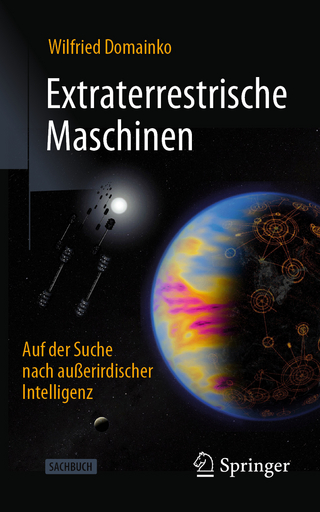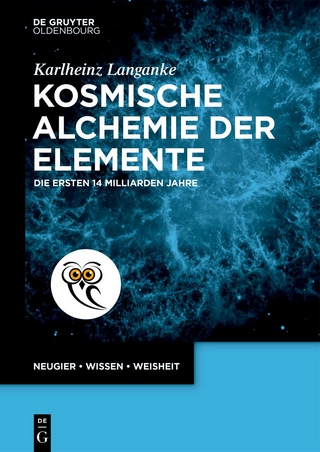
Active Galactic Nuclei
From the Central Black Hole to the Galactic Environment
Seiten
1999
Princeton University Press (Verlag)
978-0-691-01152-3 (ISBN)
Princeton University Press (Verlag)
978-0-691-01152-3 (ISBN)
- Titel ist leider vergriffen;
keine Neuauflage - Artikel merken
Begins by addressing basic questions about active galactic nuclei: What are they? How can they be found? How do they evolve? This book assesses the evidence for massive black holes and considers how they generate power by accretion. It explores the mysteries of what ignites, fuels, and extinguishes active galactic nuclei.
This is the first comprehensive treatment of active galactic nuclei - the cosmic powerhouses at the core of many distant galaxies. The term active galactic nuclei refers to quasars, radio galaxies, Seyfert galaxies, blazars, and related objects, all of which are believed to share a similar central engine - a supermassive black hole many times the mass of the Sun. Astrophysicists have studied these phenomena for the past several decades and have begun to develop a consensus about many of their properties and internal mechanisms. Julian Krolik, one of the world's leading authorities on the subject, sums up leading ideas from across the entire range of research, making this book an invaluable resource for astronomers, physicists interested in applications of the theory of gravitation, and graduate students. Krolik begins by addressing basic questions about active galactic nuclei: What are they? How can they be found? How do they evolve? He assesses the evidence for massive black holes and considers how they generate power by accretion.
He discusses X-ray and g-ray emission, radio emission and jets, emission and absorption lines, anisotropic appearance, and the relationship between an active nucleus and its host galaxy. He explores the mysteries of what ignites, fuels, and extinguishes active galactic nuclei, and concludes with a general review of where the field now stands. The book is unique in paying careful attention to relevant physics as well as astronomy, reflecting in part the importance of general relativity to understanding active galactic nuclei. Clear, authoritative, and detailed, this is crucial reading for anyone interested in one of the most dynamic areas of astrophysics today.
This is the first comprehensive treatment of active galactic nuclei - the cosmic powerhouses at the core of many distant galaxies. The term active galactic nuclei refers to quasars, radio galaxies, Seyfert galaxies, blazars, and related objects, all of which are believed to share a similar central engine - a supermassive black hole many times the mass of the Sun. Astrophysicists have studied these phenomena for the past several decades and have begun to develop a consensus about many of their properties and internal mechanisms. Julian Krolik, one of the world's leading authorities on the subject, sums up leading ideas from across the entire range of research, making this book an invaluable resource for astronomers, physicists interested in applications of the theory of gravitation, and graduate students. Krolik begins by addressing basic questions about active galactic nuclei: What are they? How can they be found? How do they evolve? He assesses the evidence for massive black holes and considers how they generate power by accretion.
He discusses X-ray and g-ray emission, radio emission and jets, emission and absorption lines, anisotropic appearance, and the relationship between an active nucleus and its host galaxy. He explores the mysteries of what ignites, fuels, and extinguishes active galactic nuclei, and concludes with a general review of where the field now stands. The book is unique in paying careful attention to relevant physics as well as astronomy, reflecting in part the importance of general relativity to understanding active galactic nuclei. Clear, authoritative, and detailed, this is crucial reading for anyone interested in one of the most dynamic areas of astrophysics today.
Julian H. Krolik is Professor of Physics and Astronomy at The Johns Hopkins University. He has written widely on theoretical astrophysics, specializing in active galactic nuclei.
| Preface | What Are Active Galactic Nuclei? And Why Does Anyone Care? | |||||||||||||||||||||||||||
| 2 | How to Find AGNs | |||||||||||||||||||||||||||
| 3 | Evolution | |||||||||||||||||||||||||||
| 4 | Global Energetics and Black Holes | |||||||||||||||||||||||||||
| 5 | Black Hole Physics | |||||||||||||||||||||||||||
| 6 | Spherical Accretion | |||||||||||||||||||||||||||
| 7 | Accretion Disks and the Optical/Ultraviolet Continuum | |||||||||||||||||||||||||||
| 8 | X-ray and [gamma]-ray Emission | |||||||||||||||||||||||||||
| 9 | Radio Emission and Jets | |||||||||||||||||||||||||||
| 10 | Emission Lines | |||||||||||||||||||||||||||
| 11 | Intrinsic Absorption and Outflows | |||||||||||||||||||||||||||
| 12 | Anisotropic Appearance and Unification of Disparate AGN Varieties | |||||||||||||||||||||||||||
| 13 | Properties of AGN Host Galaxies | |||||||||||||||||||||||||||
| 14 | Onset and Fueling | |||||||||||||||||||||||||||
| 15 | Where We Stand | |||||||||||||||||||||||||||
| App. A | Basic General Relativity | |||||||||||||||||||||||||||
| App. B | Basic Magnetohydrodynamics | |||||||||||||||||||||||||||
| App. C | Shocks and Other Discontinuities | |||||||||||||||||||||||||||
| App. D | Luminosity Functions and Other Population Statistics | |||||||||||||||||||||||||||
| App. E | The Tensor Viral Theorem | |||||||||||||||||||||||||||
| App. F | Kinematics in an Expanding Universe | |||||||||||||||||||||||||||
| References | ||||||||||||||||||||||||||||
Index
Mehr entdecken
aus dem Bereich die Geschichte und Erforschung unserer Galaxie
Buch | Hardcover (2023)
C.Bertelsmann (Verlag)
30,00 €
Auf der Suche nach außerirdischer Intelligenz
Buch | Softcover (2024)
Springer (Verlag)
22,99 €
Die ersten 14 Milliarden Jahre
Buch | Softcover (2024)
De Gruyter Oldenbourg (Verlag)
44,95 €
| ||||||||||||||||||||||||||||


